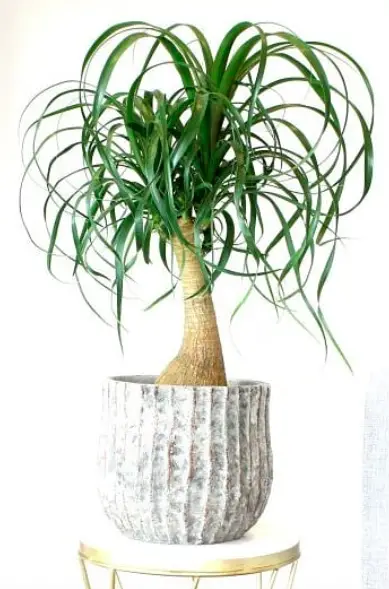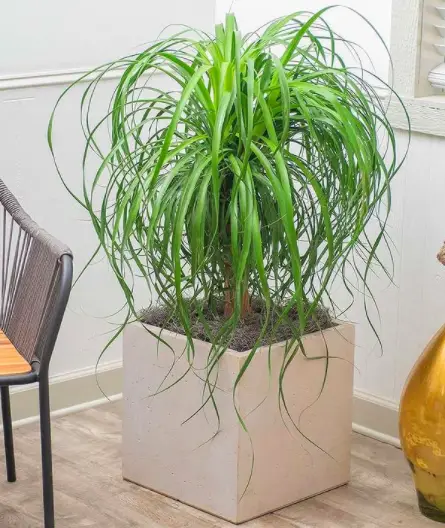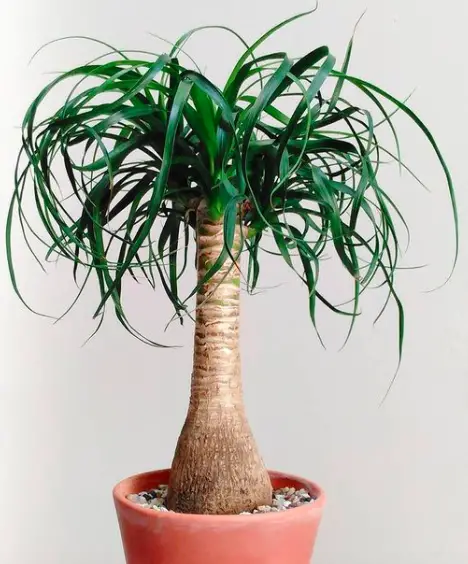Originally from the desert of southern Mexico, this bizarre-looking succulent is most unusual and eye-catching. The bottle-shaped woody stem, which serves as a water reservoir, adds to the plant’s odd appearance and gives rise to its common names of bottle palm and elephant foot.

From this bulbous stem spring several slim, downward- curving “ponytails” of gray-green leaves up to 3ft/90cm long. Clusters of small white flowers are sometimes produced on older plants. Beaucarnea recurvata grows slowly, but it is easy to keep and should live for several years. It is ideal in a modern room setting. Since it prefers dry air, it will thrive in heated houses. It likes a sunny position as well as fresh air, so should be seated near a window.

If the leaf tips turn brown, trim back the damaged leaves, but do not decimate the plant. Check for scale insects and red spider mites, which may attack the plant. Limp, pale leaves, and soft stems indicate overwatering. Stand the pot on dry newspaper for a day or two, changing the paper when it gets wet. Do not water again until the top of the soil has dried out.

Ponytail Palm FACT FILE
ORIGIN Mexico.
HEIGHT To 10ft/3m or more.
POTTING MIX Soil-based, mixed with leaf mold or peat moss, and sand.
REPOTTING Every 2-3 years, always providing good drainage. Keep this plant in a pot relatively small for the plant’s size.
PROPAGATION By seed or offsets in spring or summer, with an air temperature of 75°F/24°C, but propagation is not easy for the amateur.
KEEPING PLANTS Fading leaves can be gently peeled off. Put the plant in a sheltered spot outdoors in summer.
Ponytail Palm PLANT CARE
- Bright light, preferably full sun, all year-round.
- Minimum winter temperature of 50°F/10°C.
- Keep the soil moist from early spring to late fall, but do not let the plant stand in water.
- Feed with a weak liquid fertilizer every 4 weeks during summer.